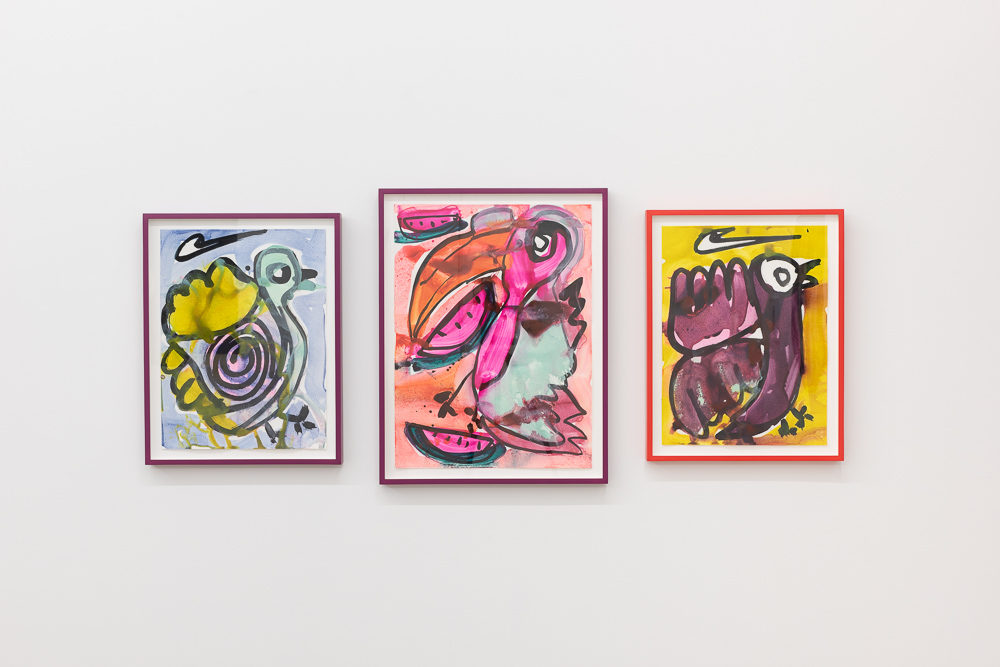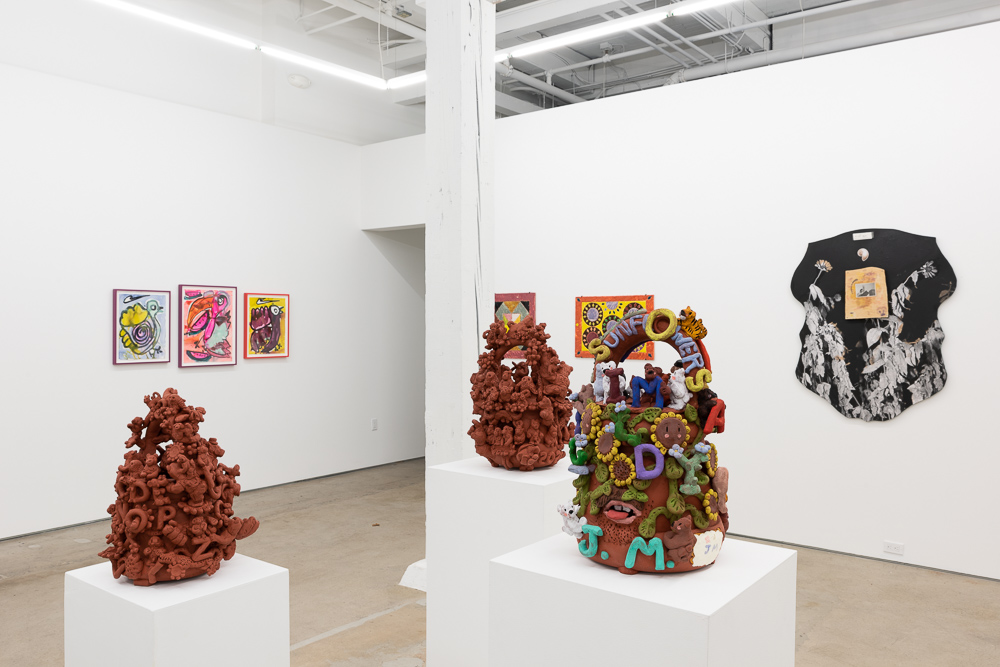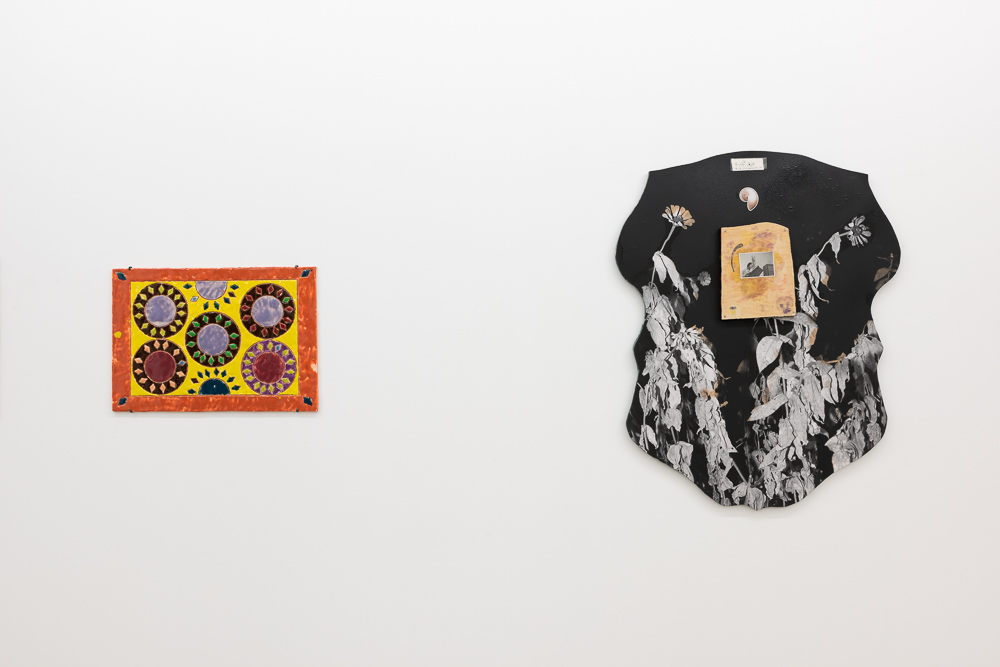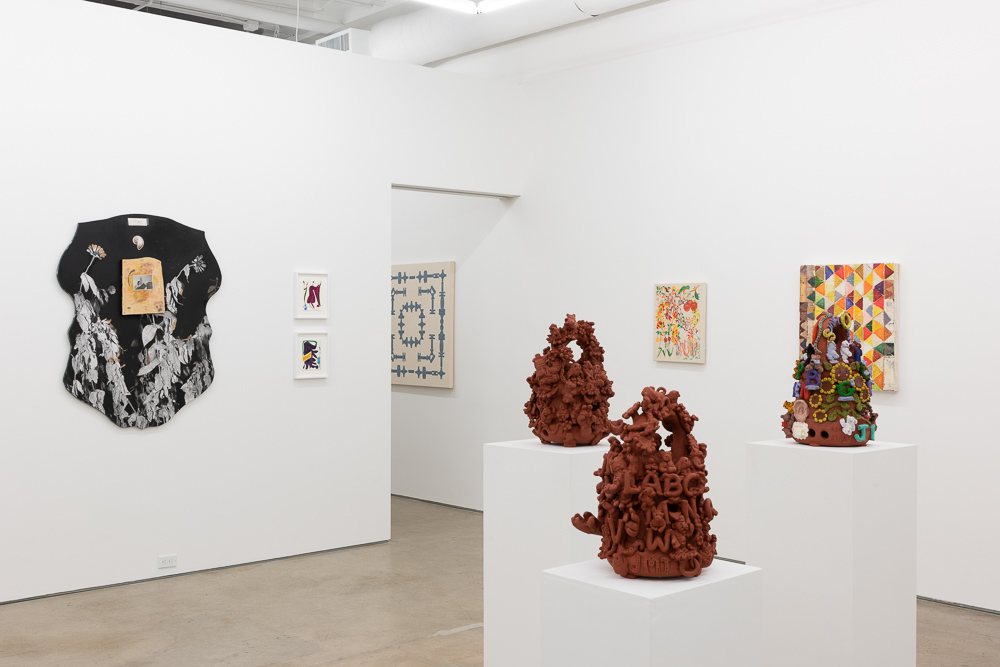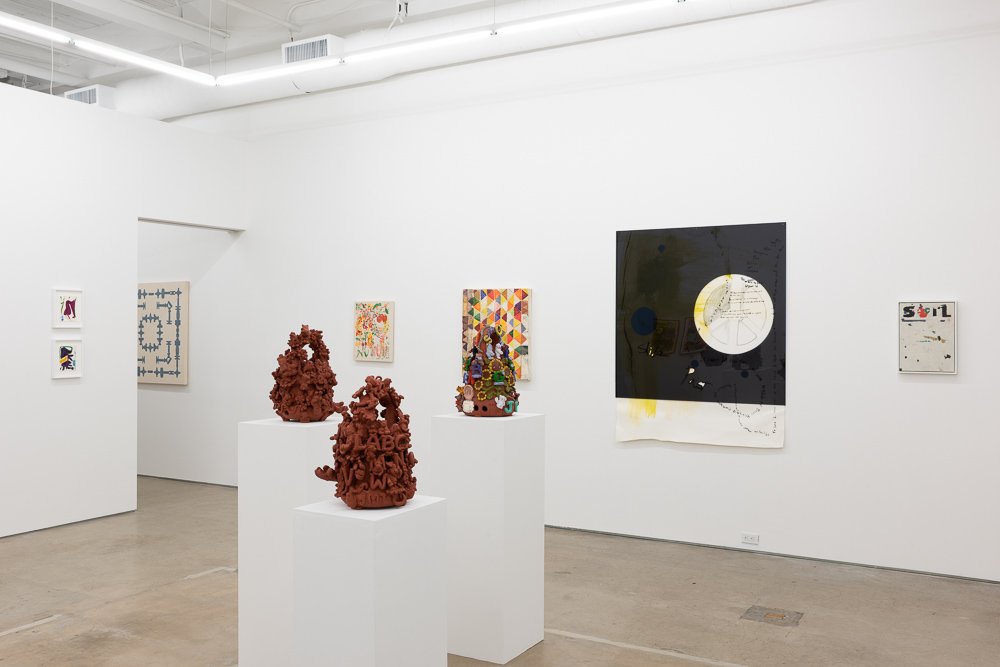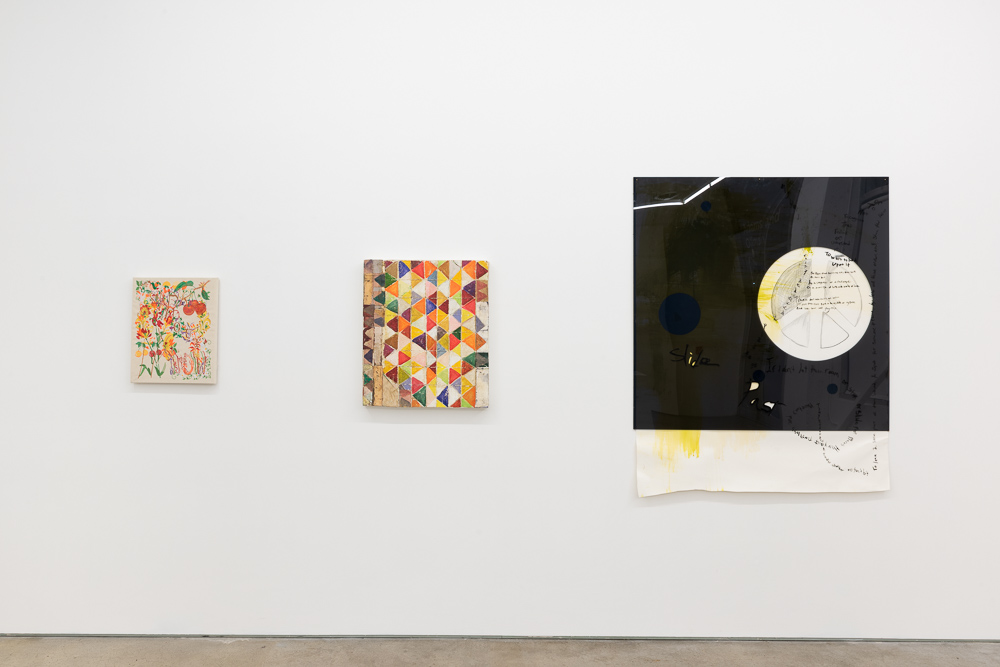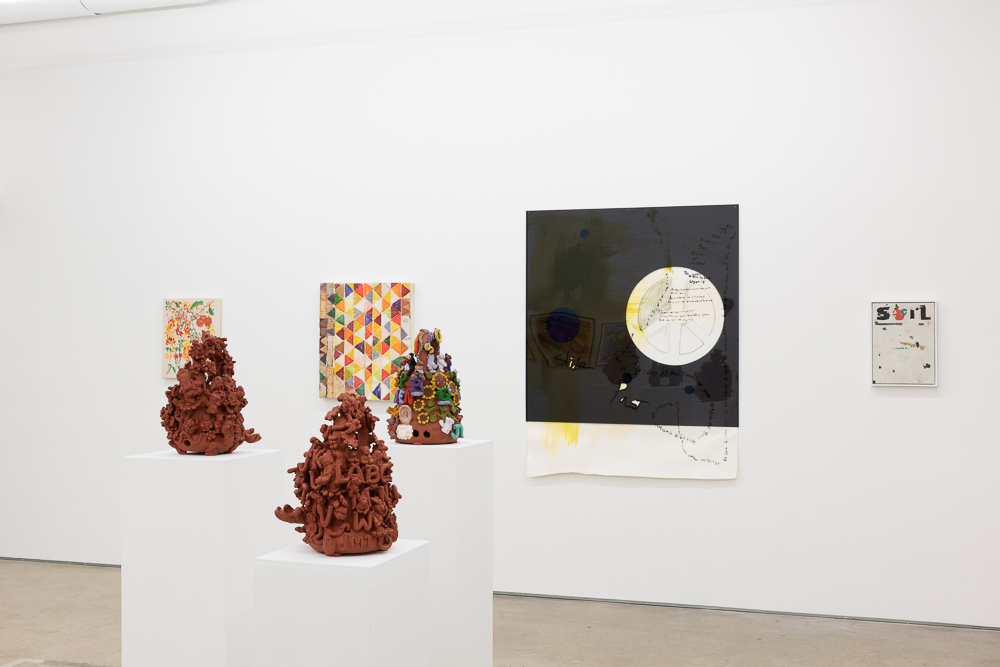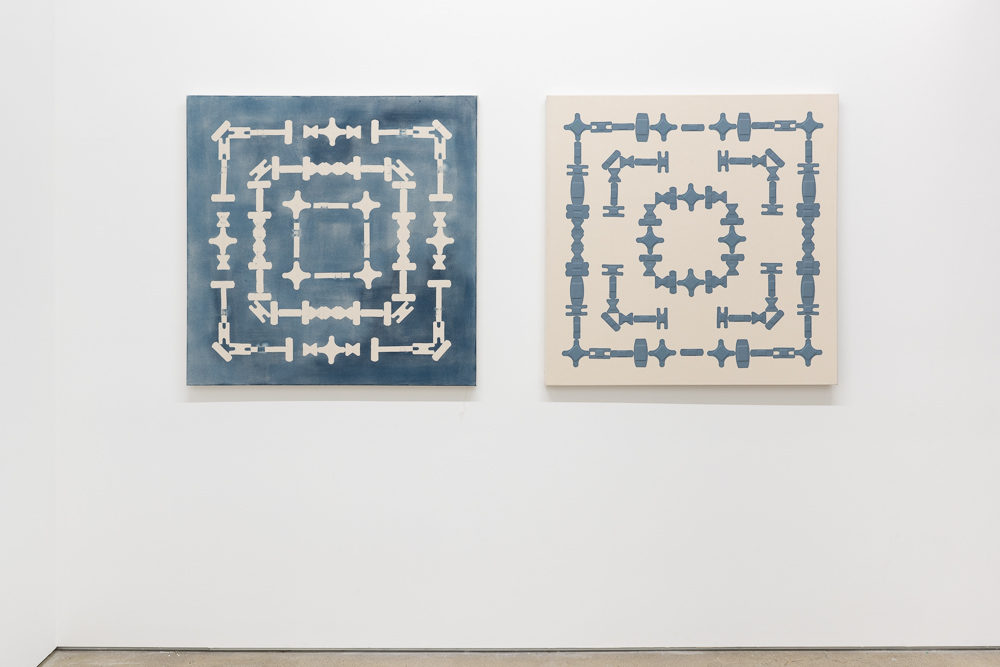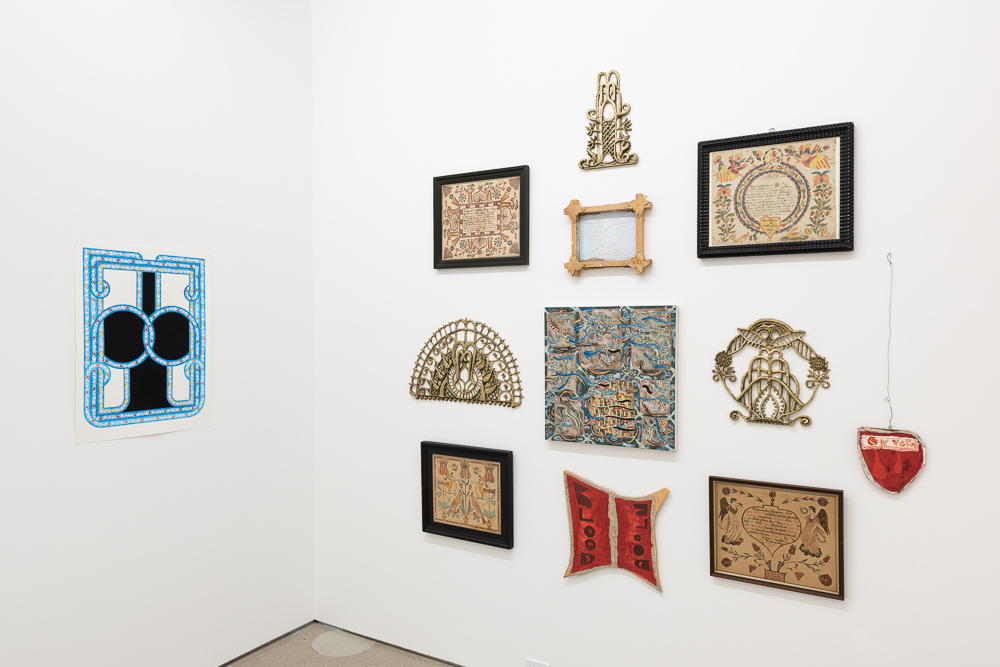Learn but the letters
forme(d) by heart,
Then soon you’l
gain this noble art
September 17–October 22, 2022
Alex Anderson, Polly Apfelbaum, Katherine Bernhardt, Joy Feasley, Raque Ford, Peter Gallo, Jesse Harrod, Abe Lampert, Maia Ruth Lee, Mirco Marchelli, Ryan McLaughlin, Molly Metz, Jeffry Mitchell, Erin Jane Nelson, Borna Sammak, Patricia Treib with fraktur by Unknown Artist, Christian Bamberger, "Flying Angel" Artist and "School of Weiss" Artist.
Matthew Singer in conversation with Polly Apfelbaum, Joy Feasley and Jesse Harrod
Adams and Ollman is pleased to announce Learn but the letters forme(d) by heart, Then soon you’l gain this noble art, a special group exhibition that brings together a range of contemporary artists whose work formally or conceptually relates to fraktur, as well as select examples of this traditional folk art. The exhibition is curated by Amy Adams and Marie Catalano and will be on view at the gallery in Portland from September 17 through October 22, 2022.
Fraktur, named for the German script, are elaborately decorated and personal forms of record keeping and commemoration that were created by the Pennsylvania Dutch between approximately 1740 and 1860. Fraktur were created to record key events such as a birth or marriage, to bless a house, or to serve as rewards or gifts, and are characterized by stylized script, as well as flourishings and arabesques, bright colors and motifs that reflect rural life and beliefs.
The fraktur examples on view in Learn but the letters forme(d) by heart, Then soon you’l gain this noble art were made by both known and unknown makers and include examples of birth and baptismal certificates as well as gift drawings decorated with common fraktur motifs such as birds, flowers, vines, hearts, female figures and angels. Alongside these historic works are contemporary artists whose work reflects concerns with personal archives, economies of language, constructions of identity, and symbolic and ornamental forms. Each shares a formal relationship to fraktur whether through calligraphic marks, diagrammatic composition, expressive, evocative color, or use of free-floating and free association of signs and symbols.
Alex Anderson’s (born in 1990, Seattle, WA, lives and works in Los Angeles, CA) exquisite ceramic paintings often contain highly romanticized, charged imagery with gold accents and dripping secretions.Using traditional techniques, Anderson mergers a contemporary camp sensibility with historical decorative objects fashioned for imperialist trade. The results allow us to consider how the history of colonialism and fetishization of non-western aesthetics can be traced through the imperialist acquisition of objects for decorative purposes.
Growing up in Montgomery County, Pennsylvania, where the tradition of fraktur had once flourished, Polly Apfelbaum (b. 1955, Abington, PA; lives and works in New York, NY) is heavily influenced by Pennsylvania German art and culture; its simple, straightforward forms, color, and symbols are deftly reinterpreted through a contemporary lens in Apfelbaum’s paintings, sculptures, and installation. Included in our exhibition are two ceramic paintings that feature hex symbols and other geometric patterning in earthy folk colors of green, yellow and red reminiscent of traditional redware pottery found throughout the region.
Katherine Bernhardt (b. 1975, Clayton, MO; lives and works in St. Louis, MO) is well known for her paintings that feature an overall patterning of everyday objects that include cigarettes, diet coke, and pizza slices, as well as signs and symbols such as the iconic Nike swoosh and E.T. Rendered without illusion or adherence to scale in bold lines and colors, Berhardt’s works, like fraktur, become a visual record of the stuff of everyday life.
Joy Feasley (b. 1966, Buffalo, NY; lives and works in Boston, MA, Philadelphia, PA and Monhegan, ME) depicts the invisible and unexplainable—emotions, theories, things at the edge of perception and those things too big to comprehend. A contemporary symbolist, Feasley draws from the practices of the occult and pagan magic, as well as belief systems where the cycles of seasons and life carry profound and sacred meaning. The aesthetics of the Pennsylvania Dutch and the United Society of Believers (more commonly known as the Shakers), whose commitment is to the pursuit of perfection and understanding through work and deeds, are both prominent influences. Graphically rendered recurring symbols throughout the work—candles, broken trees, mager discs and hex signs—constitute the artist’s distinct symblist language, and are not only meant to be understood visually, but felt emotionally. Functioning like a fraktur family lineage and blessing, Feasley’s painting, Family Tree maps out her siblings on eight branches of a felled tree.
Formally, Raque Ford’s (b. 1986, Columbia, Maryland, lives and works in Brooklyn, NY) work signals to Minimalism through her use of plastics and geometry, but her inscriptions and emblems etched into an otherwise pristine surface propose an interjection of subjectivity. In Slide Past, a field of reflective plexiglass is layered over a giant sketchy peace sign, brushstrokes, and meandering handwriting on paper. Like fraktur, Ford’s works integrate personalized text and embellishments. Her combination of symbols and language rendered on slick surfaces proposes space for imaginative thought and musings to be let loose, or “slide past.”
Peter Gallo’s (b. 1959 Rutland, Vermont; lives and works in Hyde Park, VT) ad hoc, emotional works are rooted in the body and its experience in the world and with the things that surround it. Gallo’s painterly assemblages contain a multiplicity of time; they feel both new and old, made with well-worn materials that bear the marks of their own histories; quick and slow; slapdash and carefully assembled. They are anti-pictorial and non-verbal, although text figures prominently—often one of only a handful of elements deployed to create meaning. The heart shaped “Ex Voto,” is part effigy, part poem. In Untitled, the letters BLOOD—doubled, backwards on a passage of crimson red— read like a wound, but also as lineage or bloodline.
Jesse Harrod’s (b. Canada in 1979; lives and works in Philadephia, PA) cast brass wall sculptures—created on residency in the Art/Industry program at the John Michael Kohler Arts Center—evoke the folk art sensibility of 18th Century Pennsylvania Dutch stoves, a German immigrant metal working tradition. Updated and personalized with motifs like the vagina dentata that also bring to mind Venus fly traps, Harrod incorporates flowers, stems, stalks, seed pods, and stamens, plant forms that are depicted throughout fraktur.
Patterned ribbon motifs and modernist forms recur throughout the meticulous gouache paintings of Abe Lampert (b. 1984, Wheeling, WV, lives and works in Brooklyn, NY). His works often include detailed scrolling borders based on Hungarian floral motifs, and stark geometric forms that refer abstractly to the body. This unlikely combination of minimalist form and vernacular design echoes Bauhaus and modernist traditions that often derived inspiration from regional craft or folk practices.
The abstract forms and glyphs that make up the works of Maia Ruth Lee (b. 1983, Busan, South Korea, lives and works in Salida, CO) often refer to the body as a transient subject. Objects like bound baggage, clothing, or bandaids as in the case of Positive and Negative, appear across her works, sometimes traced or imprinted in ink, unfurling across their substrates like a sentence or a map. Borders are of particular significance to Lee as sites of transformation and possibility through illegibility. In these works, like many fraktur, borders repeat concentrically and become the focal point of the composition rather than a marginal afterthought.
Mirco Marchelli (b. 1963, Novi Ligure, IT; lives and works in Ovada, IT) is an artist and musician. Inspired by everyday materials, including books and old ledgers, themselves a record of experience or time, Marcelli’s small-scale pattern works are composed of off-kilter and well-worn geometric shapes that reference architecture and its ornamentation. The paintings, composed in a faded palette of greens, reds, yellows, are in poetic dialog with an atavistic abstraction, as each carries a patina of history on its surface.
Ryan McLaughlin’s (b. 1980 Worcester, MA where he currently lives and works) paintings reconfigure pre-existing visual images, often featuring fragmented words and crumbled pictograms hovering against dusty visual fields that fuse interpretations of still-life, landscape, and abstraction. His rich and varied surfaces present an ostensibly traditional approach grounded in color, texture, and shape, but with chance registrations that simultaneously suggest and dissect the visual proposition.
A combination of text and visual forms densely intermingle on the surface of Molly Metz’s ( b. 1992, Bethlehem, PA; lives and works in Philadelphia) notational paintings. Words or phrases, as well as collaged and painted elements, interact on both the front and back of the works resulting in bold patterns that suggest a confession, visual chant, or mantra.
Appropriating historical forms from Chinese funerary sculpture, Dutch pickle jars, and Joseon Bunchoeng porcelain, Jeffry Mitchell (b.1958, Seattle; lives and works in Portland, OR) skillfully employs and subtly subverts art historical traditions. High and low forms of folk art and material culture, including Shaker Gift Drawings, Memory Jugs, and regional pottery traditions, mix seamlessly in his elaborately decorated ceramic sculptures and paintings. The ceramic works often contain reference to the time and place of their making; the watercolors on paper are often gifts or correspondence, the address on the envelope or the note contained within subsumed by Mitchell’s bears, elephants, alphabets, hearts, flowers.
Using materials and techniques associated with craft traditions, Erin Jane Nelson (b. 1989, Neenah, WI, lives and works in Atlanta, GA) creates photographic assemblages that chart changes in our natural and social worlds. Nelson’s work oftenserves to memorialize matrilineal traditions and rituals, much in the same way that fraktur served to commemorate life events. Central to “Beltane” is photographic documentation of a woman reading from the Torah sourced from the first Jewish Catalog of the 1970s, a DIY guide to spirituality aligned with the energy of social change characteristic of the times. Framing the photograph is a pigmented board used in the art of Hapa Zome, or flower hammering. An image of a seashell signals to the realm of nature, its spiral a symbol of femininity.
Borna Sammak’s (b. 1986, Philadelphia, PA, lives and works in Brooklyn, NY) dense compositions collect fragments of vernacular signage found in city delis or t-shirt shops across beachside boardwalks. The combinations of commercial graphics and text often incorporate decorative patterning or highly ornate motifs and flourishes like those found in Persian rugs or illuminated manuscripts. The bold declarations that appear throughout the work often include references to nationalism, constructions of identity, advertising, and ownership.
Patricia Treib’s (b. 1979, Saginaw, MI; lives and works in Brooklyn, NY) paintings contain a bold and colorful mark-making that reads as her own personal logographic writing system where each elegant stroke or shape carries meaning. Treib's gestural marks remind us of musical notes and calligraphy; they repeat across works and are executed again and again in a choreographed attempt to perfect each stroke, color and composition.
Additional Exhibitions and Resources on Fraktur
Framing Fraktur
curated by Judith Tannenbaum
The Free Library of Philadelphia
In other words: The spirit of fraktur
by Matthew F. Singer
The Magazine Antiques, March/April 2015
Drawn with Spirit: Pennsylvania German Fraktur
from the Joan and Victor Johnson Collection
The Philadelphia Museum of Art
Pennsylvania German Fraktur and Manuscripts
in the collection of the Free Library of Philadelphia
Select Works
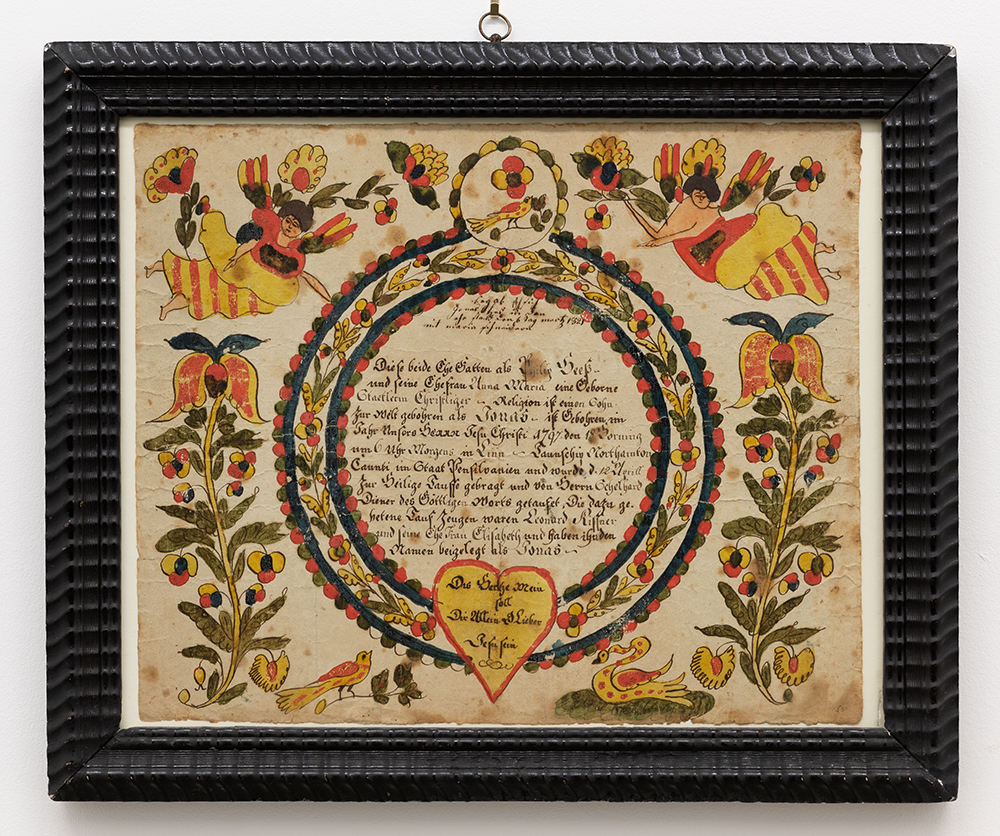
"Flying Angel" Artist
Untitled, c. 1797
watercolor on laid paper
16 1/2h x 20w in
41.91h x 50.80w cm
FAA_FRAK_001

Christian Bamberger
Untitled, 1829
watercolor on woven paper
11 3/4h x 13 3/4w in
29.84h x 34.92w cm
CB_Frak_001

Unknown Artist
Untitled, 1823
watercolor and ink on paper
12 1/2h x 15 1/2w in
31.75h x 39.37w cm
UNK_FRAK_001
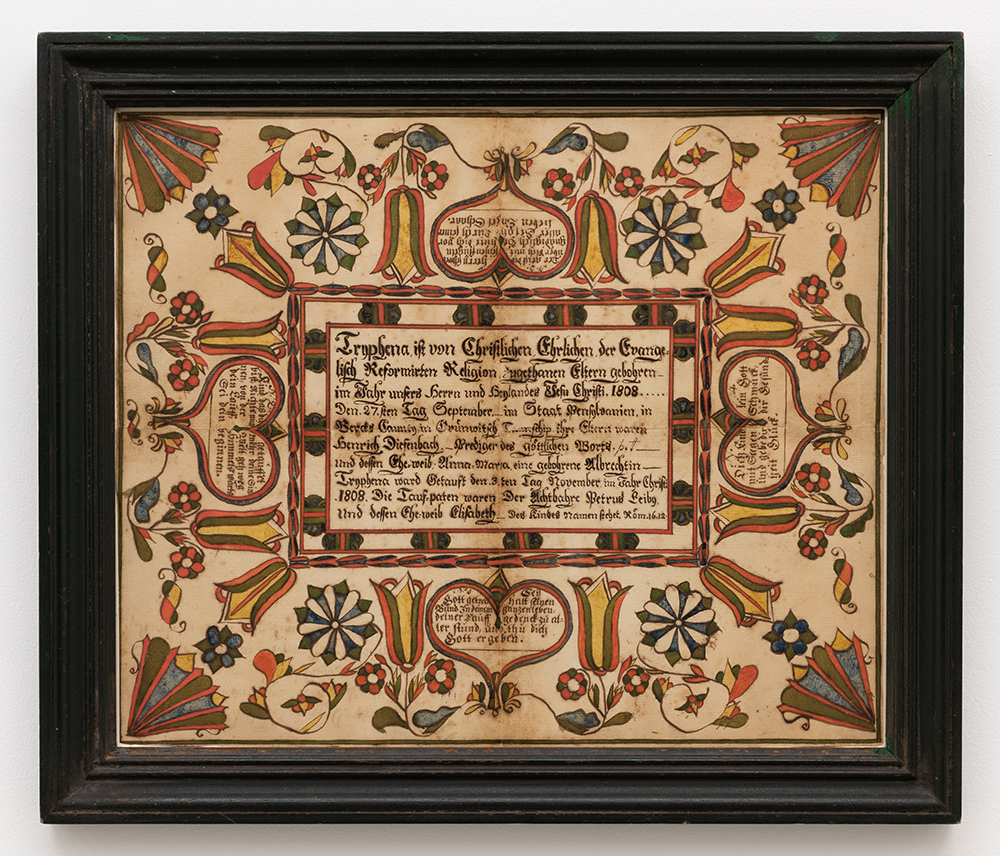
"School of Weiss" Artist
Untitled, 1808
watercolor on laid paper
13h x 15 1/2w in
33.02h x 39.37w cm
SoWA_FRAK_001
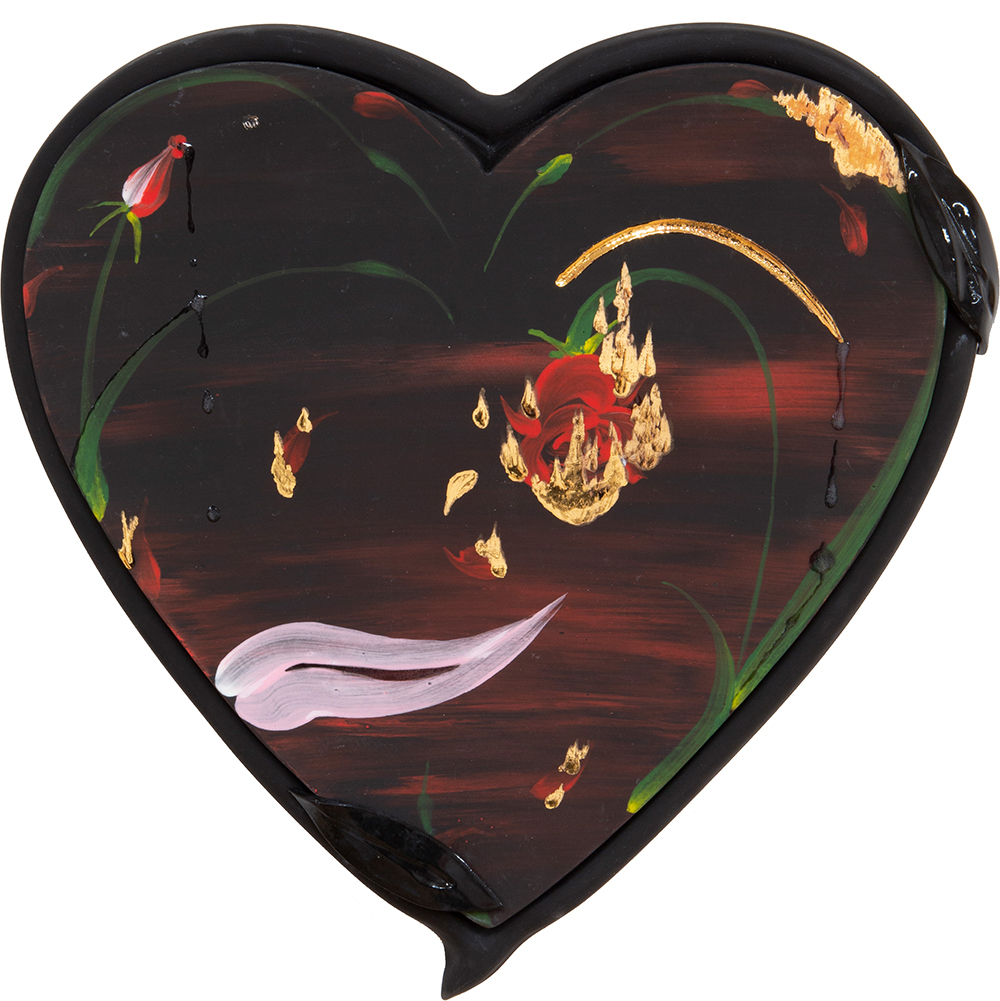
Alex Anderson
Sad Boi Heart, 2022
earthenware, glaze, gold luster
18h x 17w x 2d in
45.72h x 43.18w x 5.08d cm
AlexAnderson023

Katherine Bernhardt
Untitled, 2018
acrylic on paper
24h x 18w in
60.96h x 45.72w cm
KB-18-DR-013

Katherine Bernhardt
Untitled, 2018
acrylic on paper
20h x 15w in
50.80h x 38.10w cm
KB-18-DR-007

Katherine Bernhardt
Untitled, 2018
acrylic on paper
20h x 15w in
50.80h x 38.10w cm
KB-18-DR-011
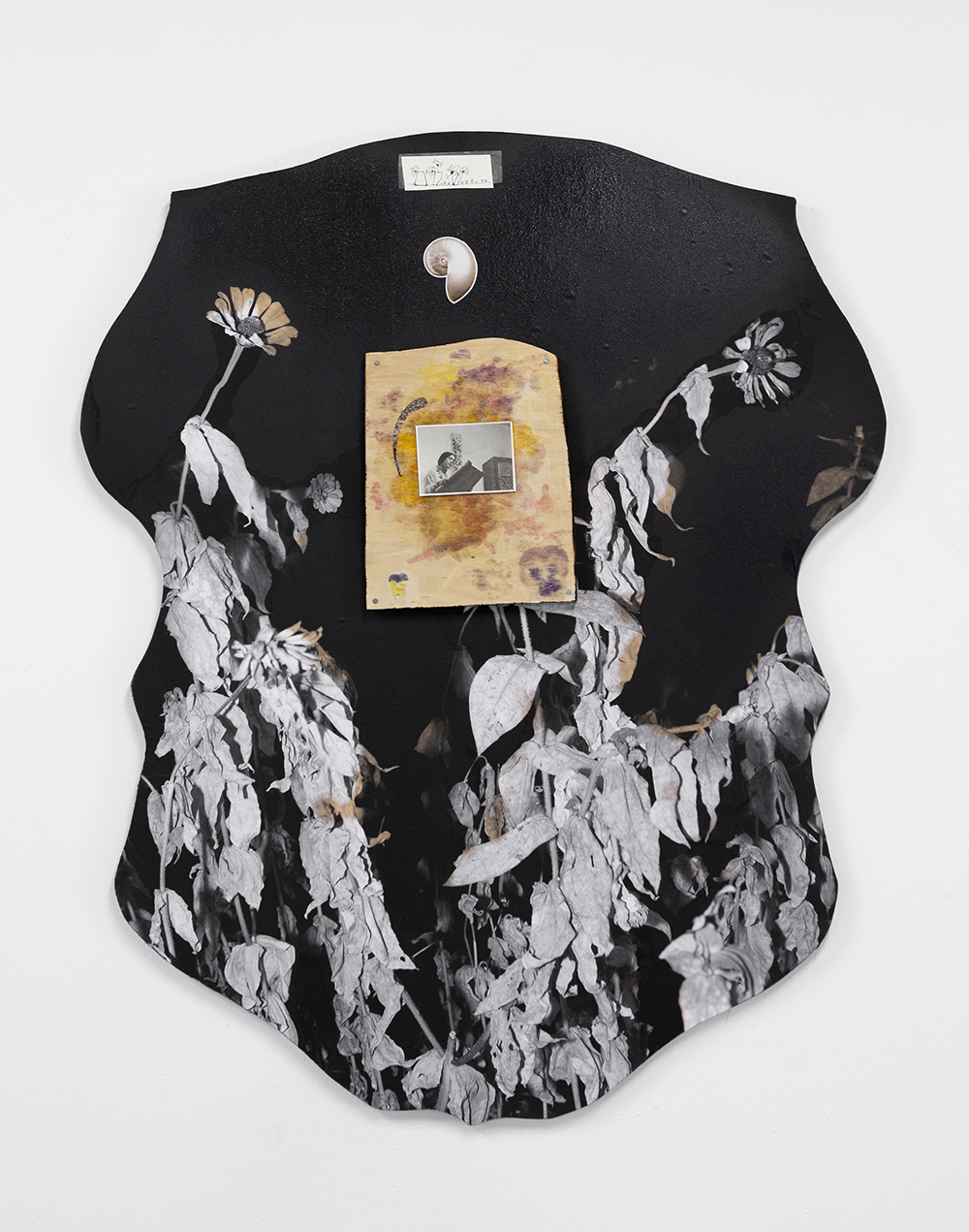
Erin Jane Nelson
Beltane, 2019
cotton pigment print, found photograph, plywood, natural dyes, eco epoxy, and found fabric on panel
49h x 38 1/2w in
124.46h x 97.79w cm
EJN 1184

Raque Ford
Slide Past, 2022
watercolor, ink, and pencil on paper and acrylic sheets
60h x 40w in
152.40h x 101.60w cm
RF.093
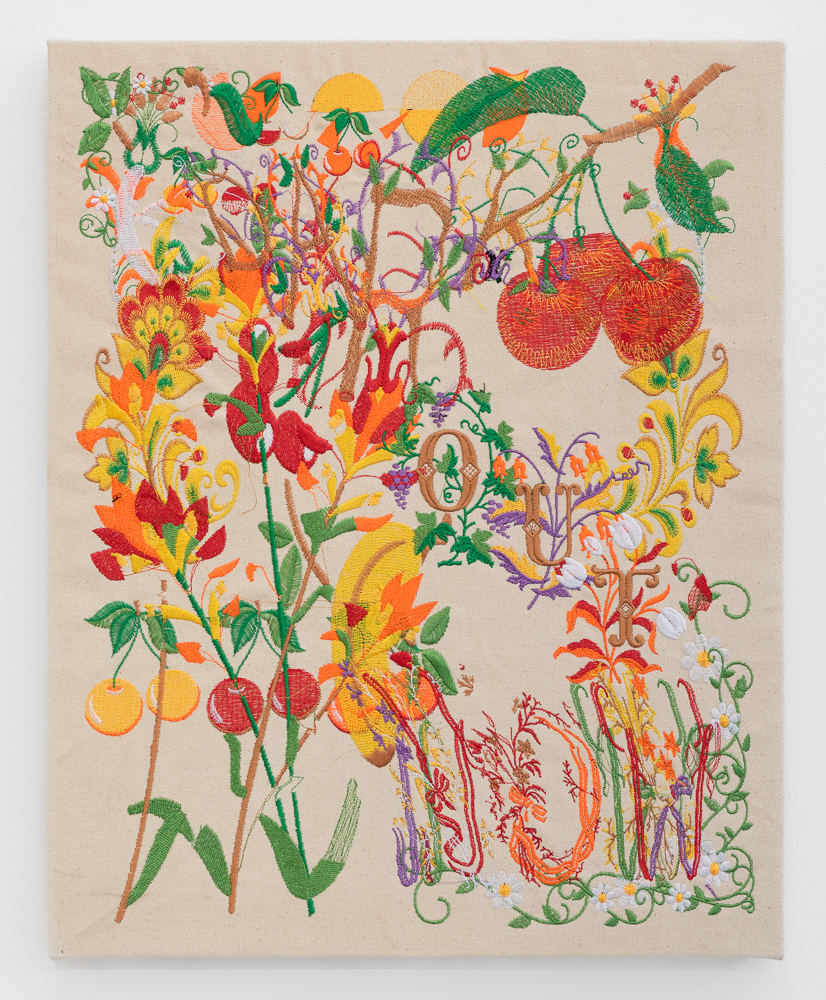
Borna Sammak
Not Yet Titled, 2022
embroidery on canvas
20h x 16w x 1d in
50.80h x 40.64w x 2.54d cm
Sb001
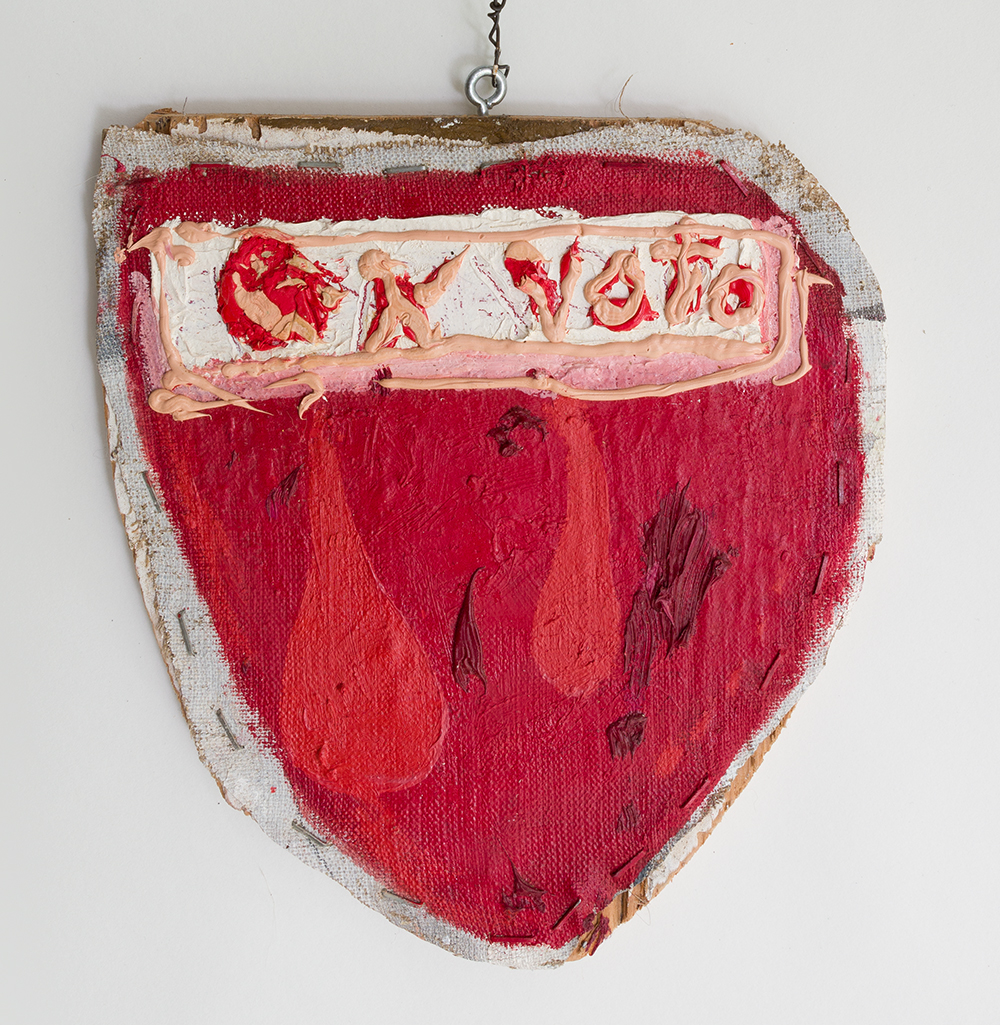
Peter Gallo
Sacred Heart, 2022
oil on linen stapled/glued to found wood, eye screw
8h x 8w in; 22 in stove pipe wire
PG001
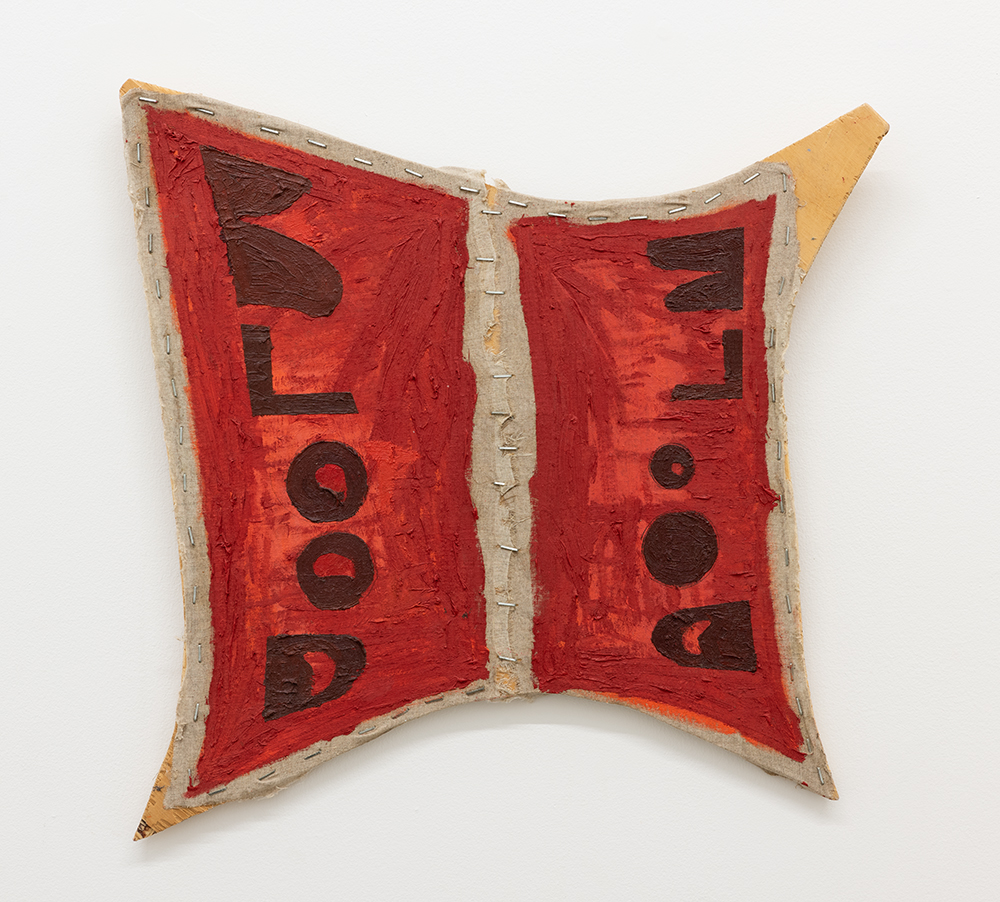
Peter Gallo
Untitled, 2020
oil on linen stapled to scrap plywood
17h x 17w in
43.18h x 43.18w cm
PG002
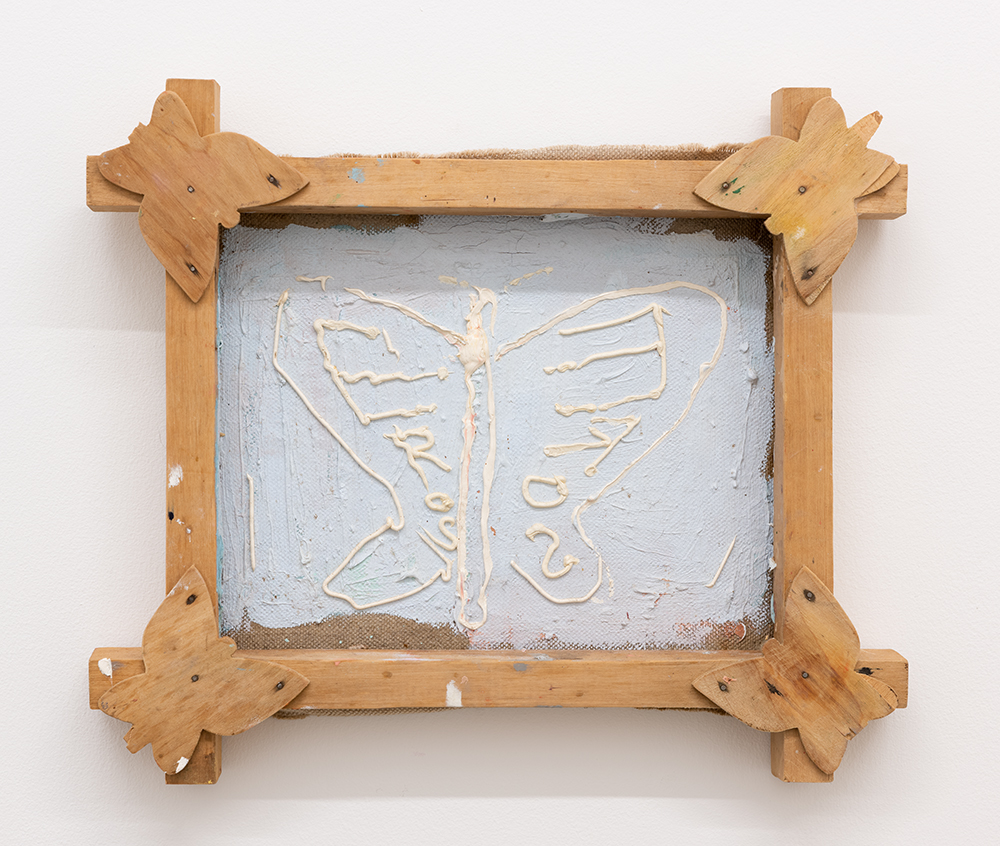
Peter Gallo
Eros, 2017
oil on linen stapled to frame
12h x 14w in
30.48h x 35.56w cm
PG003
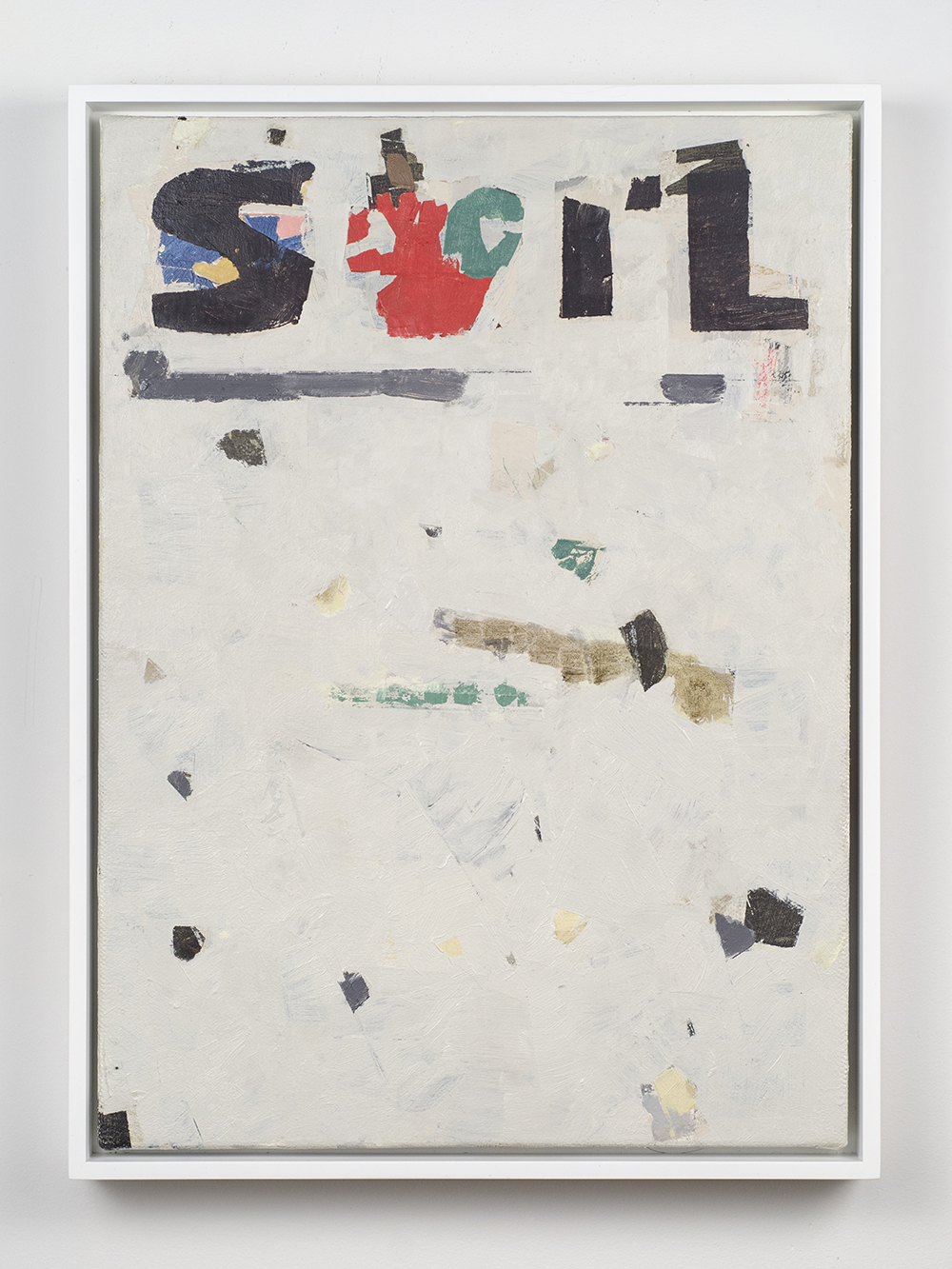
Ryan McLaughlin
Untitled, 2017
oil on linen on MDF, framed
16 1/2h x 12w in
41.91h x 30.48w cm
RM201710
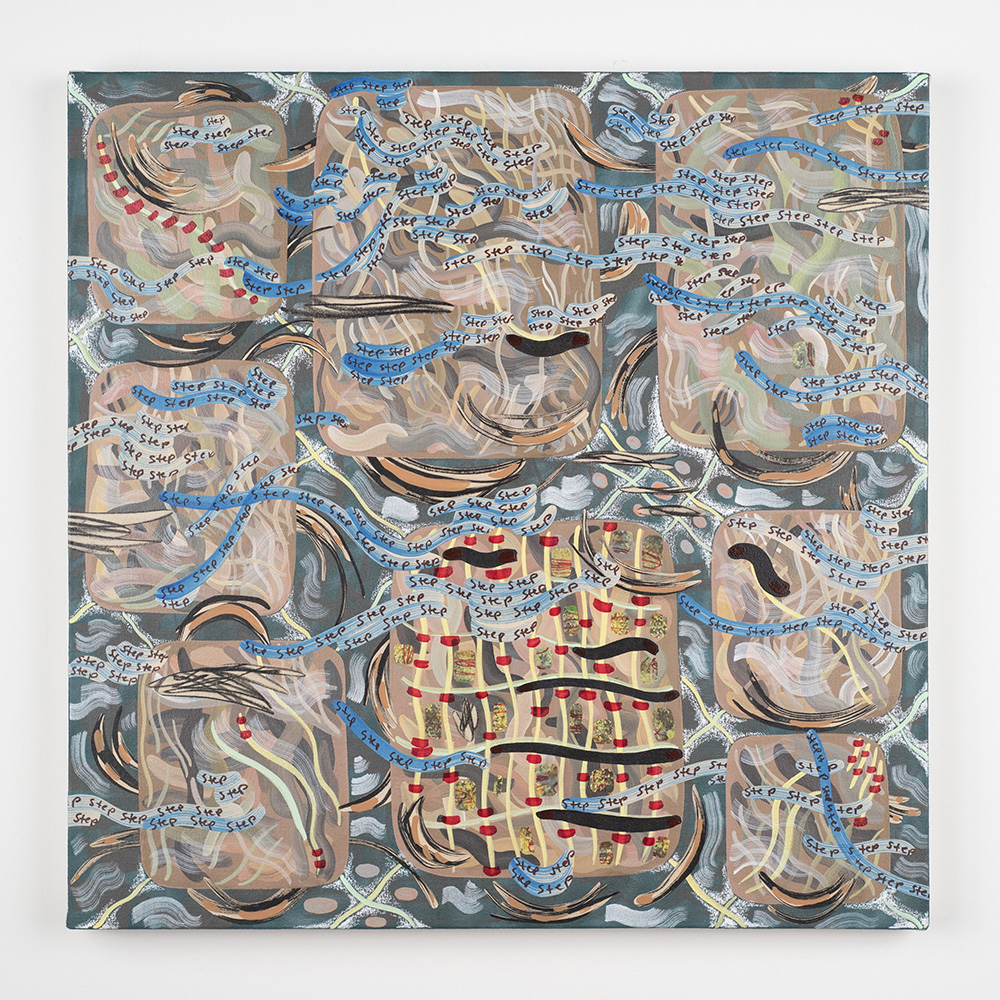

Molly Metz
Step Stepping, 2021
acrylic paint, marker, colored pencil, ink, nail polish, oil pastel, newsprint on canvas
21 1/4h x 21 1/2w in
53.98h x 54.61w cm
MMetz17
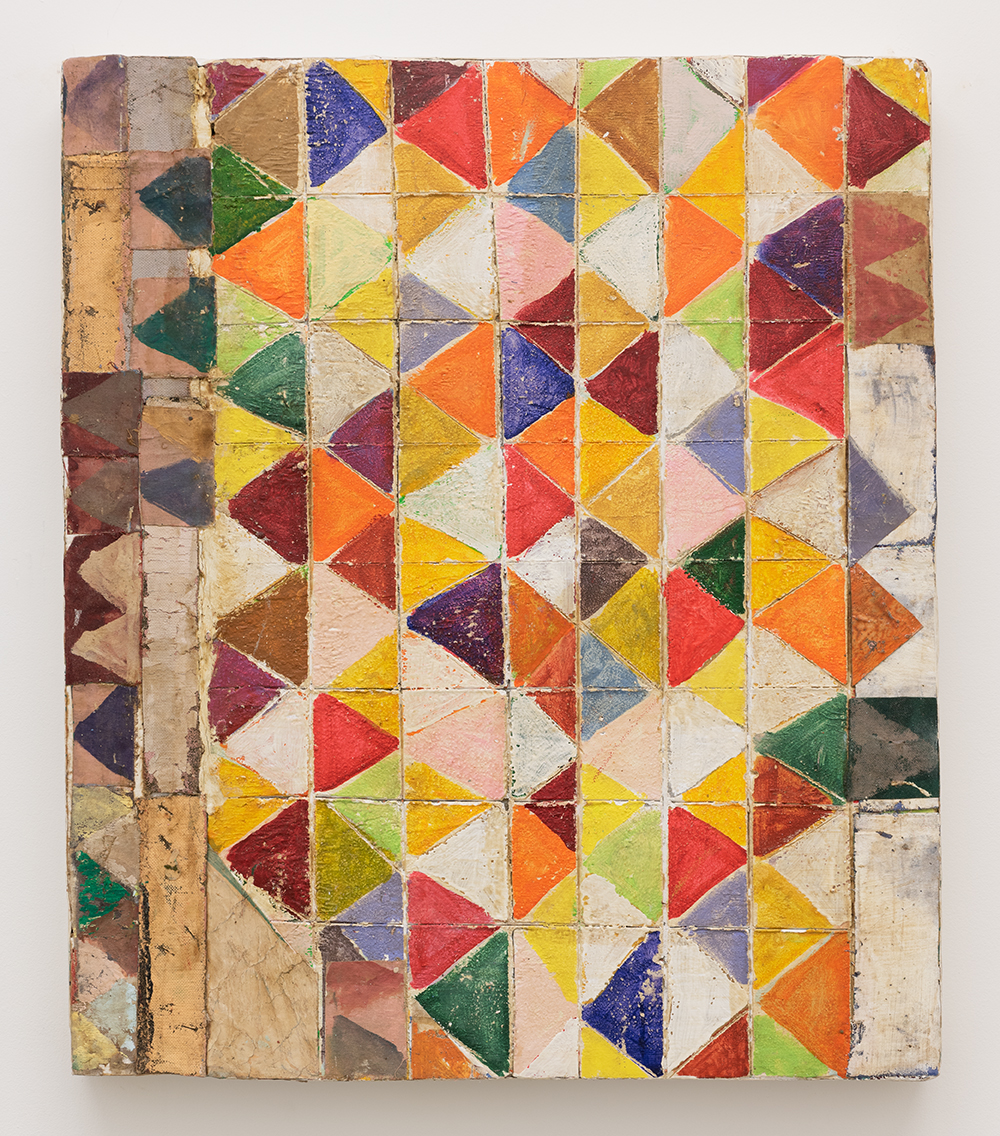
Mirco Marchelli
Untitled, 2022
plaster, paper, cloth, acrylic, wax
27 1/2h x 23 5/8w in
69.85h x 60.01w cm
MMarchelli001

Mirco Marchelli
Untitled, 2022
plaster, acrylic, tempera, wax
27 1/2h x 23 5/8w in
69.85h x 60.01w cm
MMarchelli002

Mirco Marchelli
Untitled, 2022
cloth, paper, acrylic, wax
27 1/2h x 23 5/8w in
69.85h x 60.01w cm
MMarchelli003
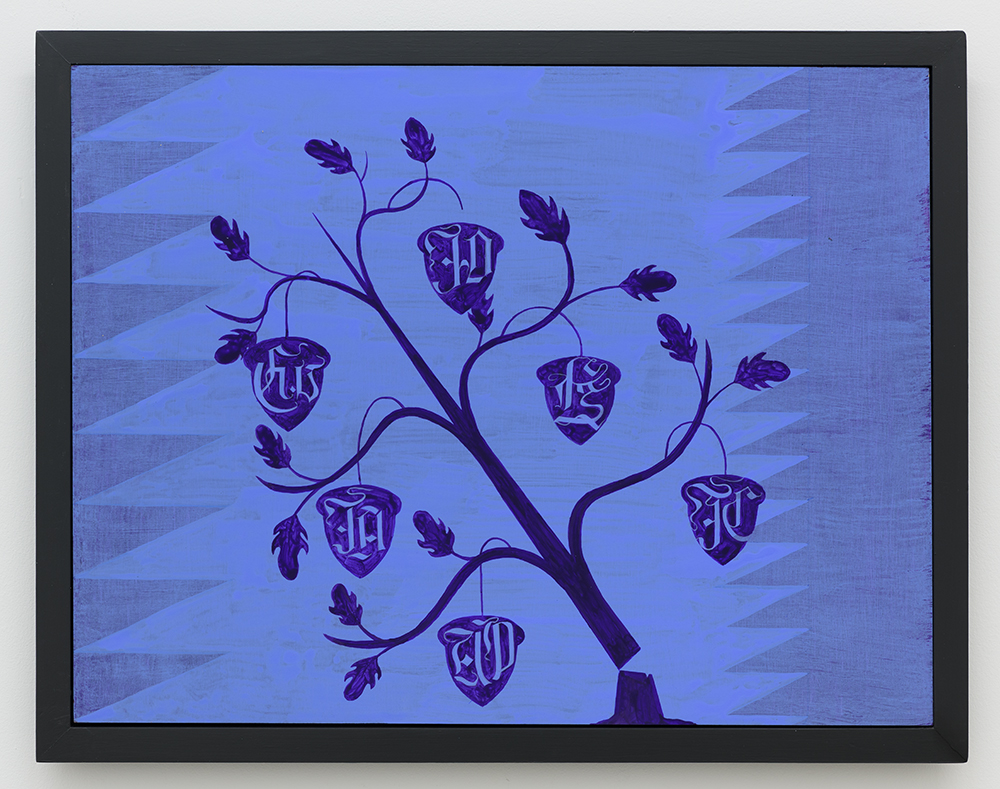
Joy Feasley
Family Tree, 2021
flashe on panel
18h x 23 1/2w in
45.72h x 59.69w cm
JF 67

Jesse Harrod
Mx. Esther, 2022
brass
15h x 24w x 1d in
38.10h x 60.96w x 2.54d cm
HARR 82

Jesse Harrod
Big Swing, 2022
brass
15h x 9 3/4w x 1d in
38.10h x 24.77w x 2.54d cm
HARR 83

Jesse Harrod
Dental Work, 2022
brass
14 1/2h x 15w x 1d in
36.83h x 38.10w x 2.54d cm
HARR 84
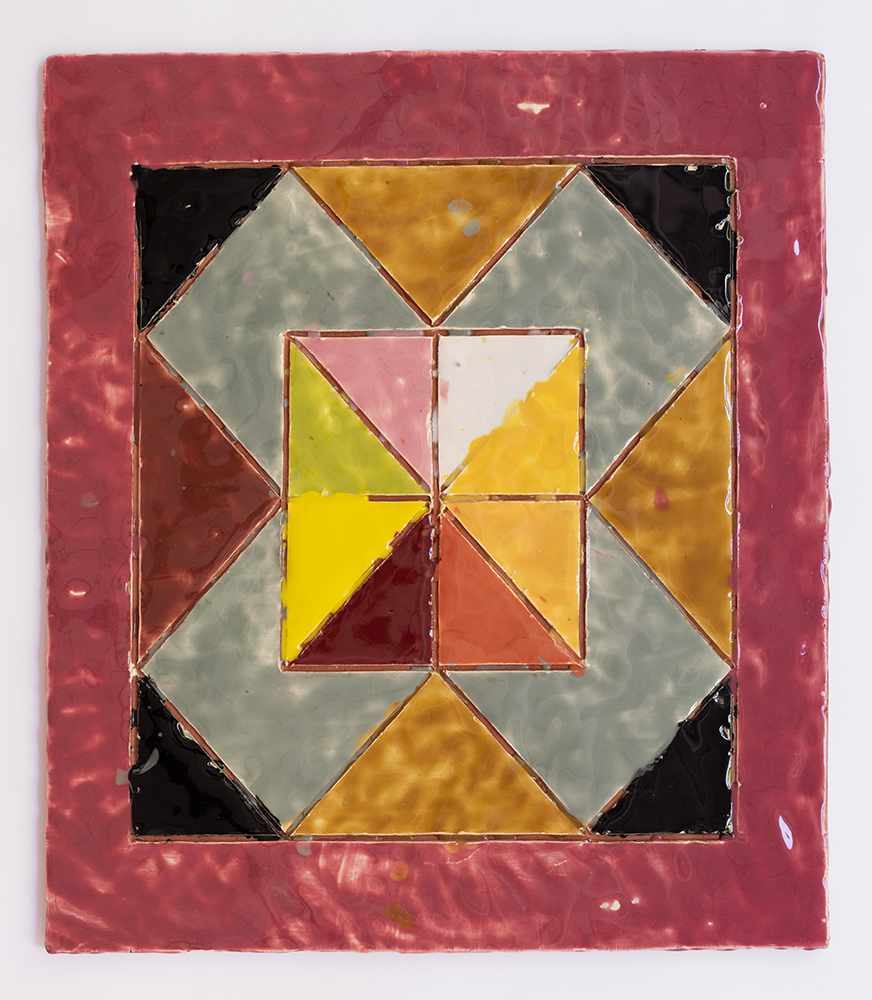
Polly Apfelbaum
Abstract STA Pattern Patch, 2022
terra cotta and glaze
22h x 19 1/2w in
55.88h x 49.53w cm
PA001
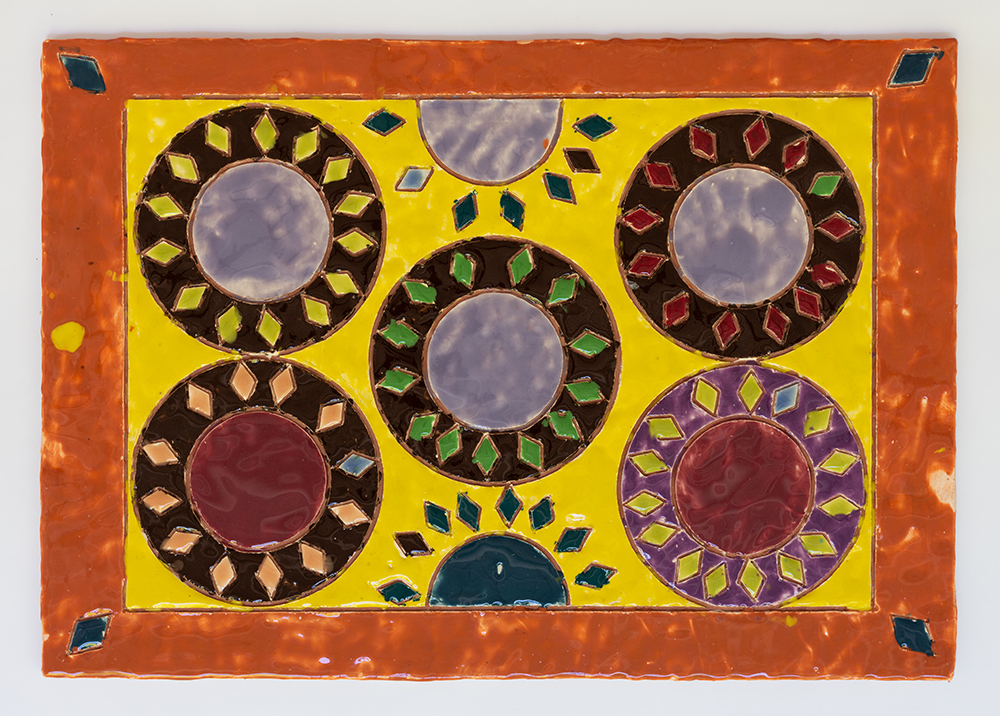
Polly Apfelbaum
Abstract Sun Florets, 2022
terra cotta and glaze
19 1/2h x 27 1/2w in
49.53h x 69.85w cm
PA002

Maia Ruth Lee
Negative, 2022
acrylic ink on canvas
40h x 40w in
101.60h x 101.60w cm
MRL 22.031
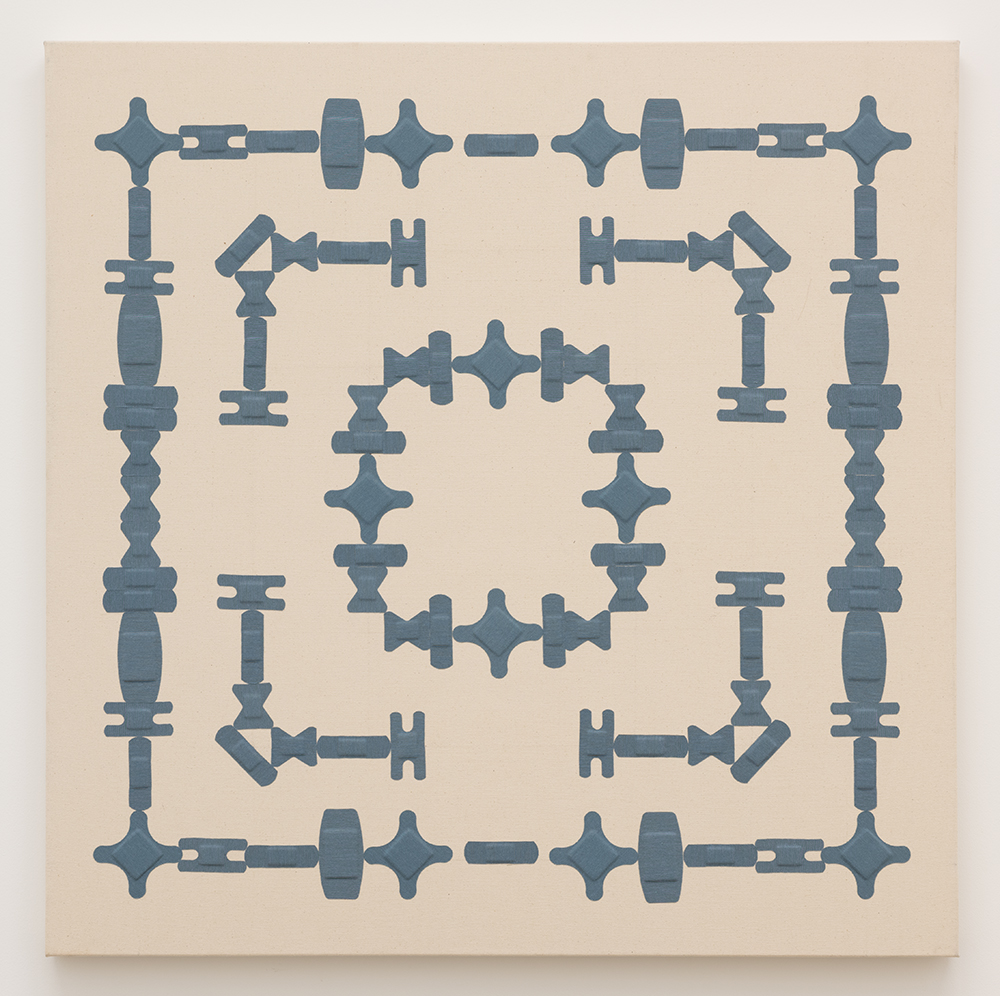
Maia Ruth Lee
Positive, 2022
fabric braided on canvas
40h x 40w in
101.60h x 101.60w cm
MRL 22.032

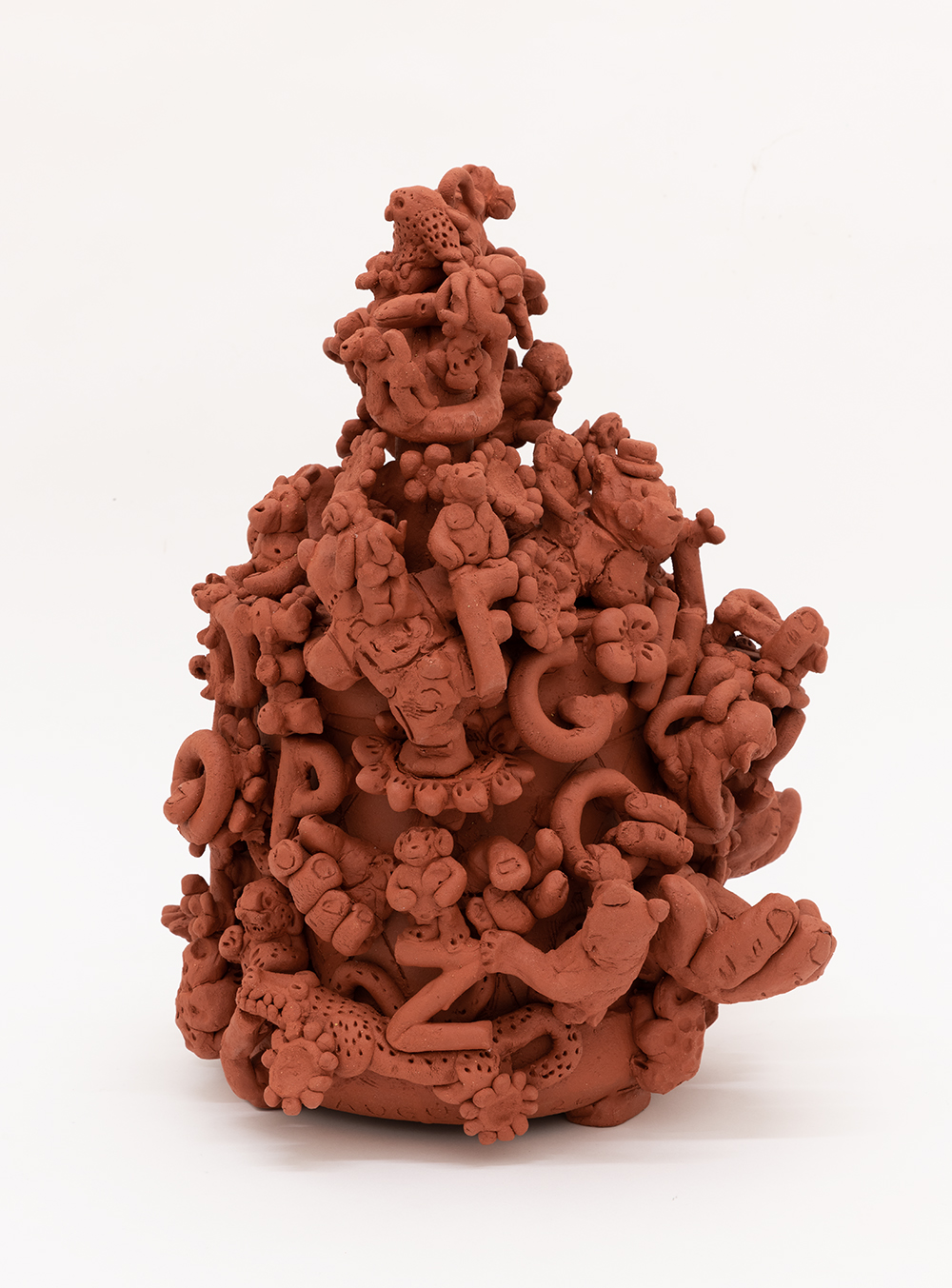
Jeffry Mitchell
Terra Cotta Alphabet Bucket, 2021
terra cotta
17h x 13 1/2w x 12 1/2d in
43.18h x 34.29w x 31.75d cm
JeM016
Courtesy of PDX Contemporary Art

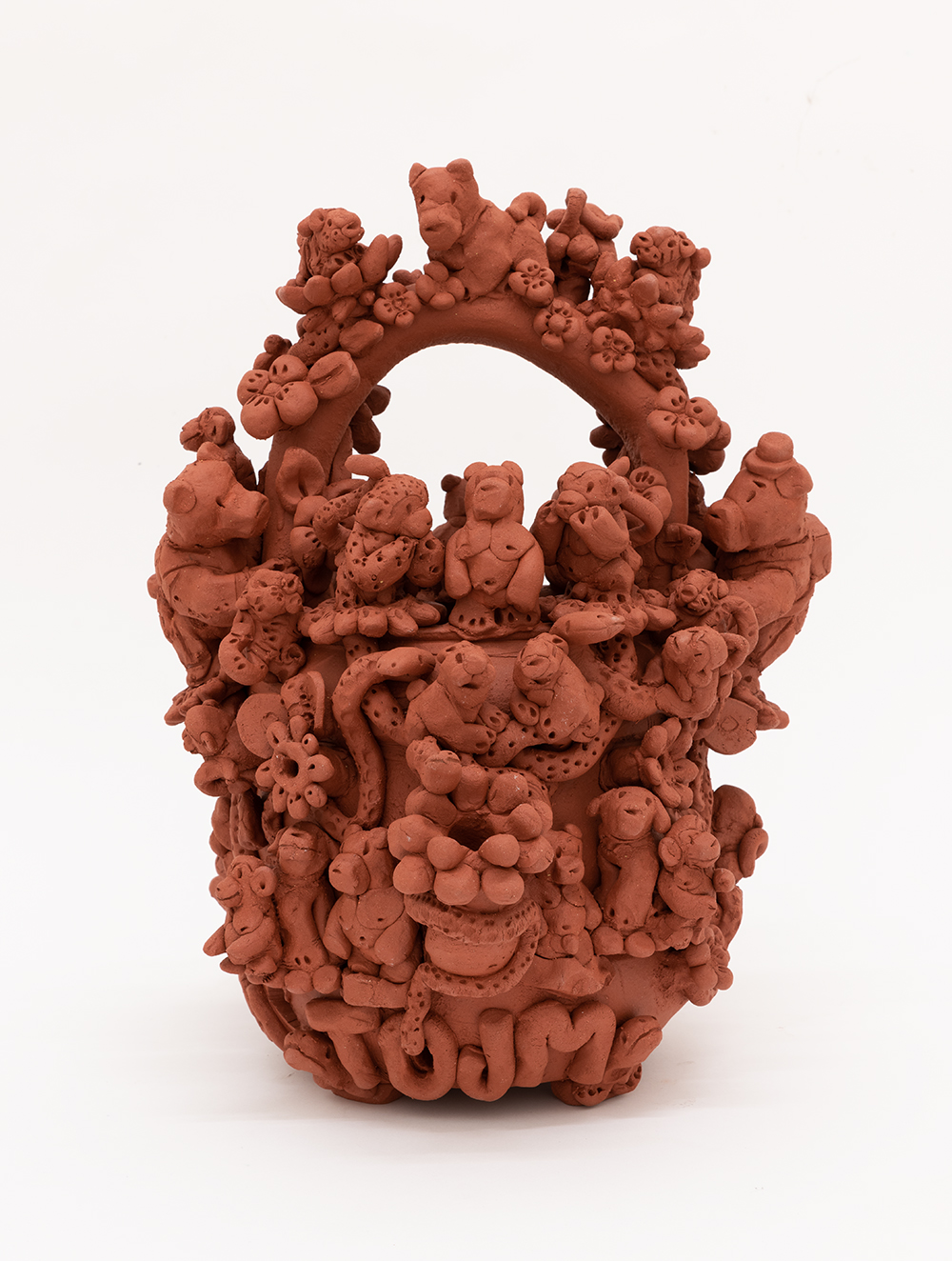
Jeffry Mitchell
Terra Cotta Bucket of Safety and Reassurance, 2021
terra cotta
18h x 14w x 14d in
45.72h x 35.56w x 35.56d cm
JeM017
Courtesy of PDX Contemporary Art

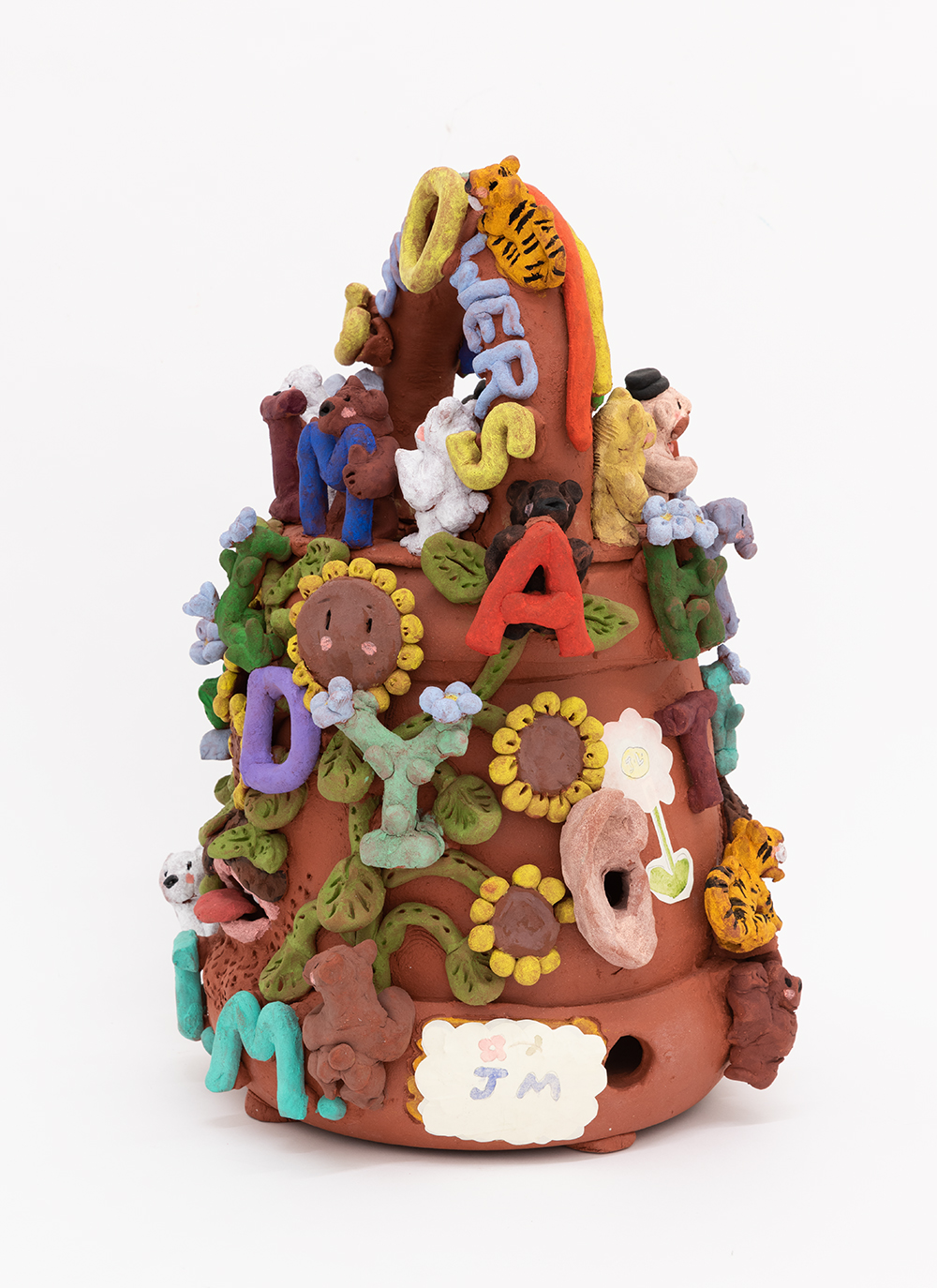
Jeffry Mitchell
Terra Cotta Sunflower Bucket, 2022
terra cotta
18h x 18w x 12d in
45.72h x 45.72w x 30.48d cm
JeM018
Courtesy of PDX Contemporary Art
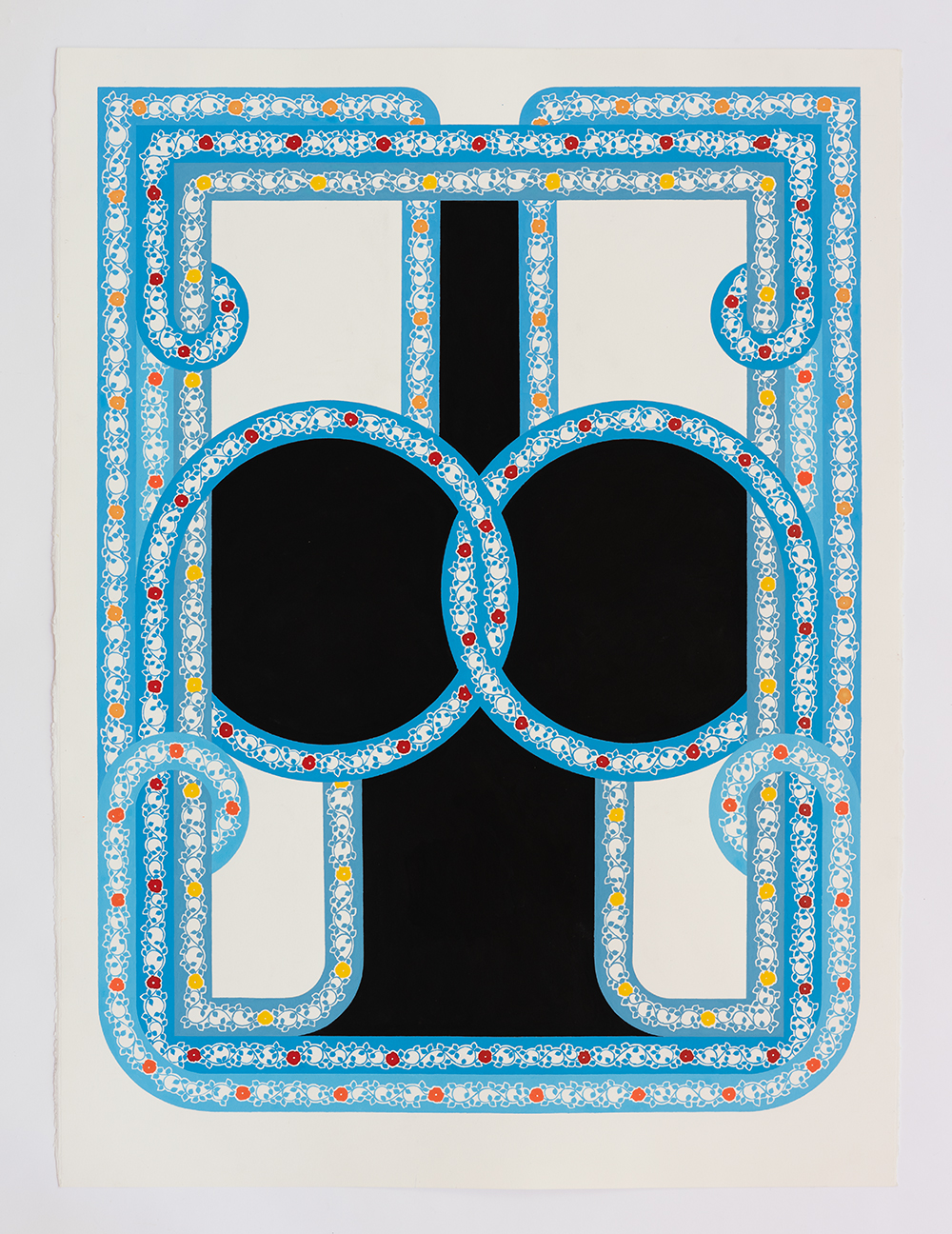
Abe Lampert
Meditations in an Emergencies, 2022
gouache on paper
30h x 22 1/4w in
76.20h x 56.52w cm
AL001
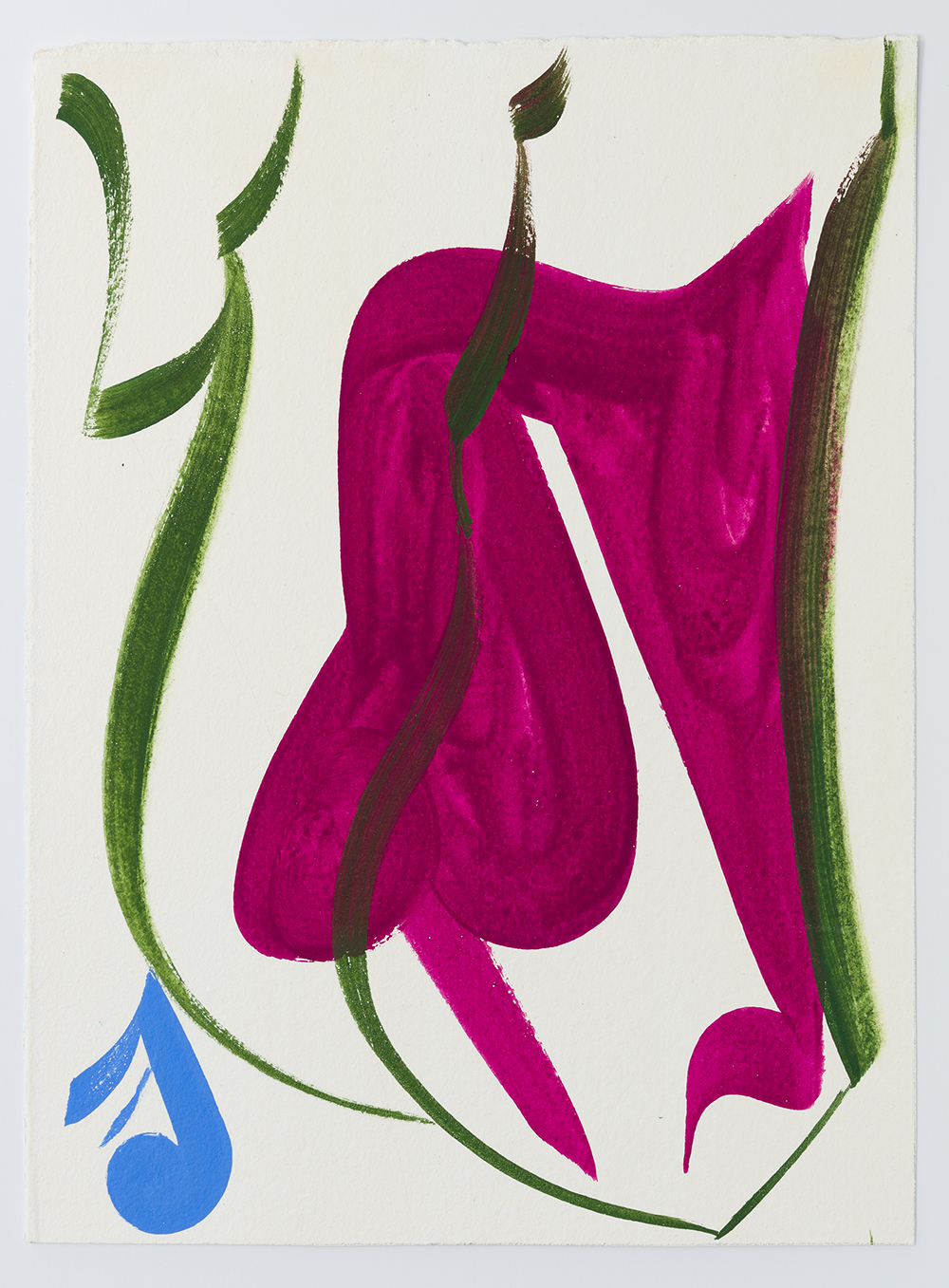
Patricia Treib
Magenta Sleeve Variation, 2021
gouache on paper
7 1/2h x 5 1/2w in
19.05h x 13.97w cm
PT/D 4364/U

Patricia Treib Undulate (Violet) Variation, 2021
oil on paper
7 1/2h x 5 1/2w in
19.05h x 13.97w cm
PT/D 4365/U
Installation Images


